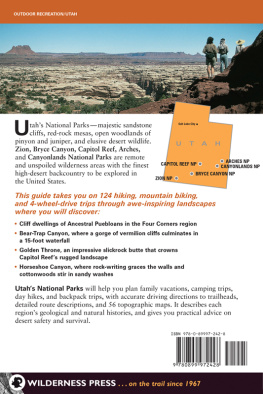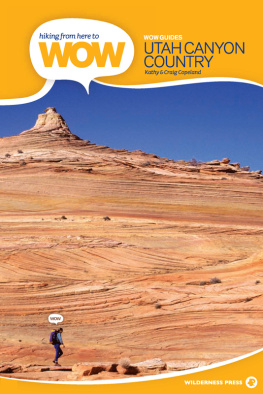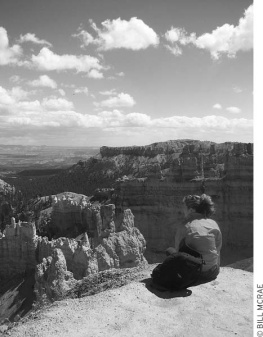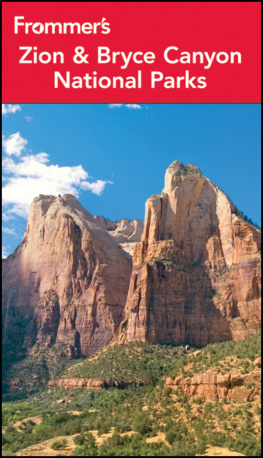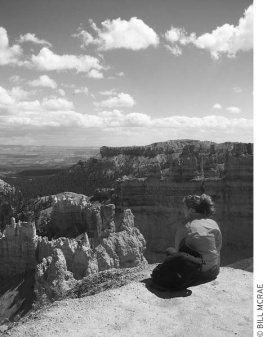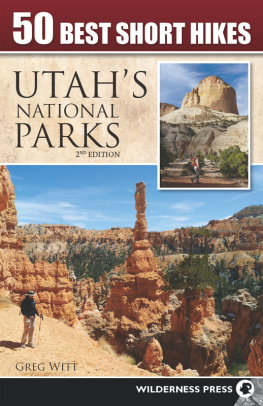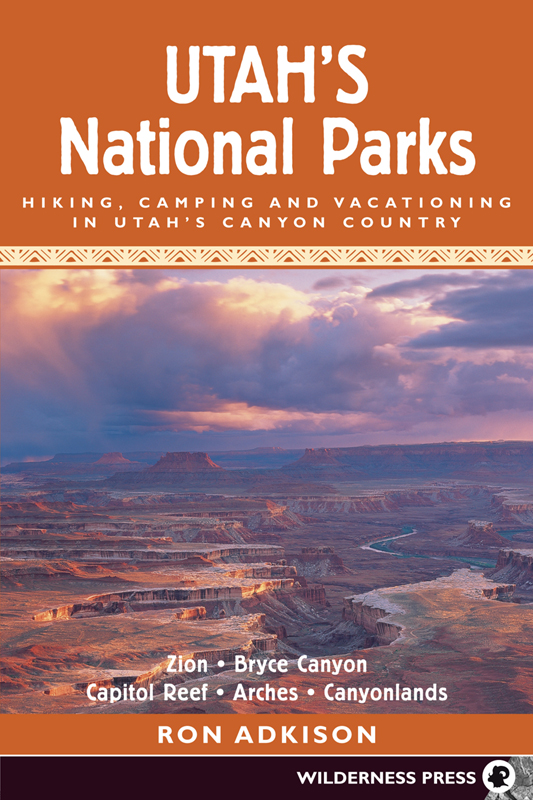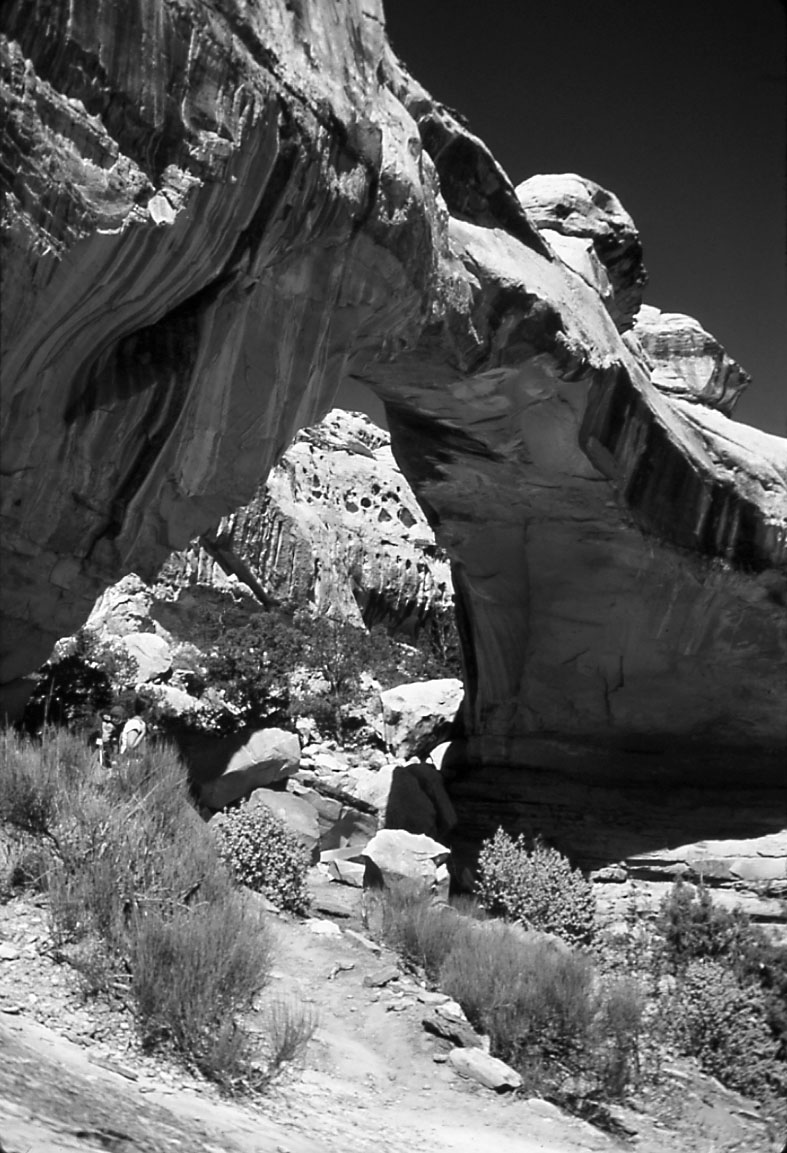

Utahs National Parks
1st EDITION 1991
2nd EDITION 2001
5th printing 2010
Copyright 1991, 2001 by Ron Adkison
Front cover photo 2001 Tom Till
Back cover photo 2005 Michael McKay
Interior photos, except where noted, by Ron Adkison
Maps: Ron Adkison
Illustrations: Nicky Shriver
Cover and book design: Larry B. Van Dyke
ISBN 978-0-89997-242-8
Manufactured in the United States of America
| Published by: | Wilderness Press |
| 1345 8th Street |
| Berkeley, CA 94710 |
| (800) 443-7227; FAX (510) 558-1696 |
| info@wildernesspress.com |
| www.wildernesspress.com |
Visit our website for a complete listing of our books and for ordering information.
Cover photos: Green River Overlook at sunset, Canyonlands National Park (front); Looking into the Maze District, Canyonlands National Park (back)
Frontispiece: Hickman Bridge, Capitol Reef National Park
All rights reserved. No part of this book may be reproduced in any form, or by any means electronic, mechanical, recording, or otherwise, without written permission from the publisher, except for brief quotations used in reviews.
SAFETY NOTICE: Although Wilderness Press and the author have made every attempt to ensure that the information in this book is accurate at press time, they are not responsible for any loss, damage, injury, or inconvenience that may occur to anyone while using this book. You are responsible for your own safety and health while in the wilderness. The fact that a trail is described in this book does not mean that it will be safe for you. Be aware that trail conditions can change from day to day. Always check local conditions and know your own limitations.
Acknowledgments
Writing a guidebook to the national parks of Utah, a multifaceted landscape encompassing nearly one million acres, was a monumental task, and keeping the book up to date is an equally large and never ending process.
To keep a guidebook up to date, there is no substitute for firsthand re-scouting of trails, roads, trailheads, and campgrounds, as well as becoming familiar with new and ever-evolving regulations, restrictions, and park management direction. In 1999 I seized the opportunity to return to my beloved canyon country to gather information for the second edition. This pleasant task was accomplished with the companionship of my son, Ben, who shares my enthusiasm for wild places, and like myself, favors Utahs canyon country.
The task, however, could not have been accomplished without the generous support of numerous staff members of the National Park Service in Utah. Rising far and above the call of duty, these gracious individuals read every word of the book and scanned each map to ensure the book is accurate and up-to-date. These people are truly public servants, and we share as a common bond our love for this incomparable country.
To the following individuals, and to all associated with the national parks of Utah, this book is dedicated:
Zion National Park: Denny Davies, Tony Thaler.
Bryce Canyon National Park: Robert Mack.
Capitol Reef National Park: Judy Chrobak-Cox.
Arches National Park: Diane Allen.
Canyonlands National Park: Paul Henderson.

Contents
The National Parks of Utah
Stretching across the southern third of Utah are five of perhaps the most magnificent national parks in the nation. These parks embrace some of the finest and most unusual examples of erosional forms on the globe, and they are truly among the wonders of the world. Utahs national parks are a veritable wilderness of stone, and indeed much of the land in each park has been recommended for federal wilderness designation.
Many serious hikers, however, shun national parks, believing that such areas are tourist meccas where a wilderness experience is difficult, if not impossible, to have. That may be true for some of our national parks, but not for Utahs. Even in Zion National Park, where annual visitation averages more than two million people (nearly half the total annual visitation to all Utah national parks), the hiker can enjoy magnificent, wild country and a good deal of solitude only a short distance from most any road.
The majority of park visitors spend only a day in each Utah park, viewing the scenery from the comfort of their vehicles as they try to see as much country as a one- to two-week vacation will allow.
For visitors with limited time, these parks indeed have a great deal to offer. Much of the parks scenery can be enjoyed from park roadways, and numerous short trails, many of them nature trails, offer visitors a chance to stretch their legs, smell the deserts fragrance, feel the wind in their faces, view seemingly endless panoramas and incomparable landscapes, enjoy the delicate blossoms and the perfumes of myriad wildflowers, and observe desert creatures going about their day-to-day lives. Many short trails require no special hiking ability, and some are accessible to handicapped persons in wheelchairs and even to baby strollers.
For an extended stay, each park has one or more excellent campgrounds, and some are available to large recreational vehicles. Each park also boasts a visitor center and interpretive activities that include ranger-led hikes and evening-campfire naturalist programs.
For the backcountry enthusiast, each park also contains broad stretches of pristine wilderness, and in some places, particularly in Capitol Reef and Canyonlands, hikers can roam for days and not see a single soul.
Visitors to the majestic landscape of Utahs national parks will enjoy a wide range of scenery, including vast plateaus clothed in cool forests of pine, fir, and aspen; magnificent canyons up to 4000 feet deep; soaring cliffs, some of them sheer and smooth from top to bottom, others broken and fluted with great buttresses and columns; cliff-edged mesas, some capped by stone, others topped by velvety grass-lands and pygmy forests of pinyon and juniper; broad desert valleys and sun-baked desert flats; domes, crags, arches and pinnacles of solid stone, colored in nearly every shade of the spectrum.
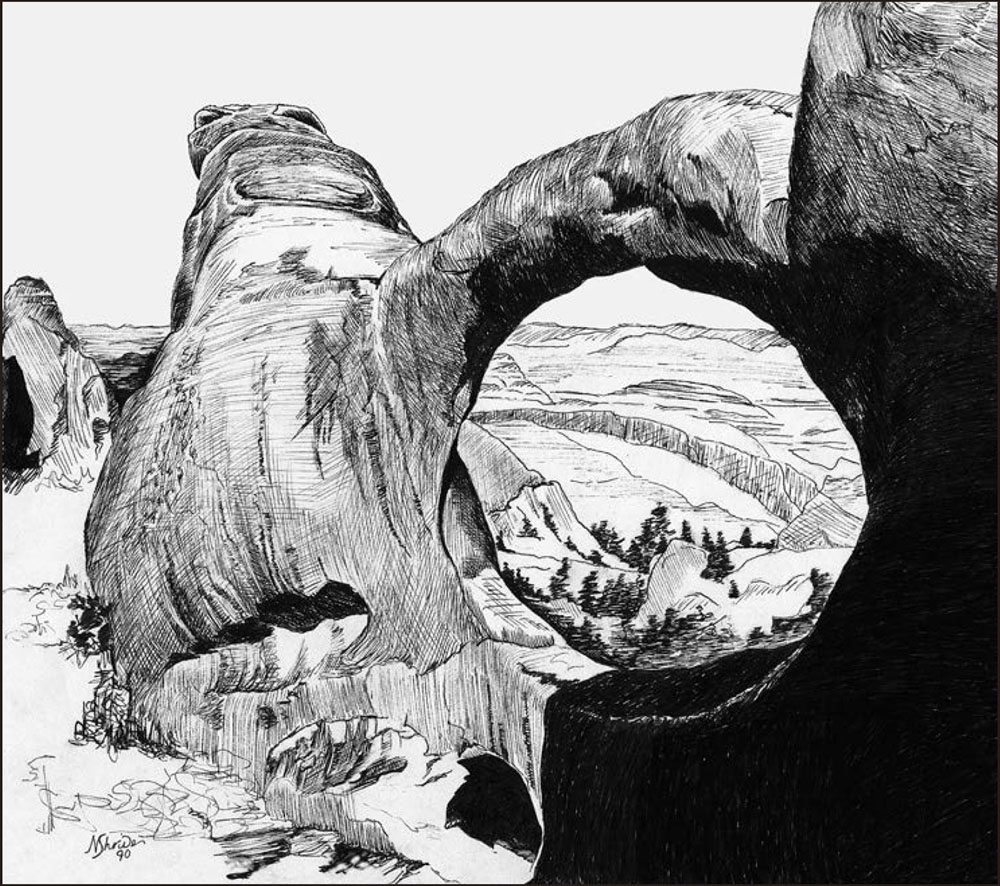
Double-O Arch, Arches National Park
Another part of the scenery in Utahs national parks is the diversity of plants and animals, all of them living in delicate balance and adapted to the rigors of the high desert, where rainfall is scant and undependable, and where temperatures can be excessively hot. This desert country of the Colorado Plateau may seem harsh and unforgiving, inhospitable to human life if not to plants and animals, but humans have lived and even thrived here for thousands of years. Park visitors will encounter granaries and cliff dwellings of the Ancestral Puebloans (formerly referred to as the Anasazi), rock-writing panels dating back more than 2000 years, old homesteads, cowboy line camps, and even farm equipment.
Yes, Utahs national parks have a great deal to offer to everyone, from chapters of natural history and human history to chapters of earth history spanning more than 300 million years. Recreational opportunities are also diverse, ranging from dayhikes to extended backcountry treks, horseback rides (in Zion and Bryce), 4WD trips, and river float trips.

